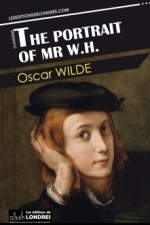Search
Search results
Fruit Bat (42 KP) rated Dead Bodies Do Tell Tales - A Jack the Ripper Novel in Books
Mar 1, 2018
Amanda Harvey Purse what can I say amazing I loved this book and I'm not just saying that.
The story line jumps between the years 1888 and 1889 the place London your hosts for this intriguing murder mystery are Mary Kelly the fifth Jack the Ripper victim and Thomas Dunn a writer and I'm not telling you any more because you really should read this book. There is so much I could tell but won't all you need to know is that Amanda has mixed alot facts relating to the Jack the Ripper case amongst fiction to create a great story.
The story line jumps between the years 1888 and 1889 the place London your hosts for this intriguing murder mystery are Mary Kelly the fifth Jack the Ripper victim and Thomas Dunn a writer and I'm not telling you any more because you really should read this book. There is so much I could tell but won't all you need to know is that Amanda has mixed alot facts relating to the Jack the Ripper case amongst fiction to create a great story.
Eilidh G Clark (177 KP) rated The Portrait of Mr W.H. in Books
May 14, 2017
. As a paradox to the realism and ethics of the period, decadent writers, artists, and poets challenged a society that strove for a standard in public discourse.
First published in 1889, Oscar Wilde’s The Portrait of Mr W.H., is a short story about the efforts of three characters trying to discover the identity of Shakespeare’s Mr W.H. ; the dedicatee of his many sonnets. Wilde’s novel is a prime example of decadent literature and aestheticism, which, as a result, challenges the Victorian ideals of moral decency and public rectitude. The author uses paradox in the novel to present a theory that contradicts the conservative critics of Shakespeare’s sonnets.
Wilde presents a subjective interpretation of Shakespeare’s sonnets that portrays homoerotic sexual desire as the force for creative inspiration. Foremost, through the character Cyril Graham, the author demonstrates that art is ‘an attempt to realise one’s own personality on some imaginative plane out of reach of the trammelling accidents and limitations of real life’, (Wilde, p.111).
Taking from a hypothesis in the previous century by Edmund Malone and Thomas Tyrwhitt, the character of Cyril forms a theory in which Mr W.H. is a young actor named Willie Hughes, employed by Shakespeare and who is the muse to which the sonnets are devoted. Cyril investigates each poem and pieces together a theory he believes to be true.
On the surface, Cyril’s theory derives from feeling and beauty rather than logic and instruction.
The withholding of facts in Shakespeare’s sonnets energises Cyril. He scours the poems to find a clue that harmonise with his own feelings. Cyril believes that Shakespeare influences his readers by guiding them to Willie Hughes.
Cyril, spurned by the moralistic interpretations of previous critics, becomes enthralled by Shakespeare’s muse.
Wilde presents a subjective interpretation of Shakespeare’s sonnets that portrays homoerotic sexual desire as the force for creative inspiration. Foremost, through the character Cyril Graham, the author demonstrates that art is ‘an attempt to realise one’s own personality on some imaginative plane out of reach of the trammelling accidents and limitations of real life’, (Wilde, p.111).
Taking from a hypothesis in the previous century by Edmund Malone and Thomas Tyrwhitt, the character of Cyril forms a theory in which Mr W.H. is a young actor named Willie Hughes, employed by Shakespeare and who is the muse to which the sonnets are devoted. Cyril investigates each poem and pieces together a theory he believes to be true.
On the surface, Cyril’s theory derives from feeling and beauty rather than logic and instruction.
The withholding of facts in Shakespeare’s sonnets energises Cyril. He scours the poems to find a clue that harmonise with his own feelings. Cyril believes that Shakespeare influences his readers by guiding them to Willie Hughes.
Cyril, spurned by the moralistic interpretations of previous critics, becomes enthralled by Shakespeare’s muse.

